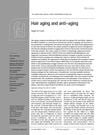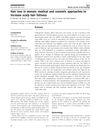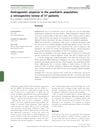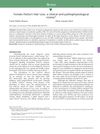Female Androgenetic Alopecia: New Pathophysiological Factors and Future Trends for a More Comprehensive Clinical Approach
September 2016
in “
Más dermatología
”
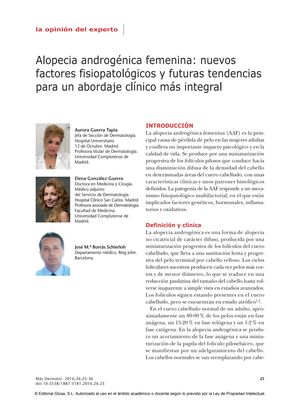
TLDR New factors in female hair loss include genetics, hormones, stress, and inflammation; future treatments should also focus on these areas and consider the patient's emotional well-being.
The document from 2017 discusses female androgenetic alopecia (FAA), a condition characterized by hair follicle miniaturization and diffuse hair loss, particularly in the frontal and superior scalp areas. It affects approximately 40% of women by age 50 and has a significant emotional impact. The pathogenesis of FAA is multifactorial, involving genetic predisposition, hormonal factors such as androgens, oxidative stress, and microinflammation. Genetic factors include variations in the androgen receptor gene, while hormonal factors involve testosterone and its metabolites. The document also notes that FAA can be a sign of hyperandrogenism, which may have cardiovascular and metabolic implications. Treatments targeting 5α-reductase inhibition, like lipid extracts of Serenoa repens and Pygeum africanum, are promising, and future treatments should also address oxidative stress and microinflammation. The importance of a comprehensive clinical approach that considers the psychological impact of FAA and treatment compliance is emphasized to improve outcomes.


